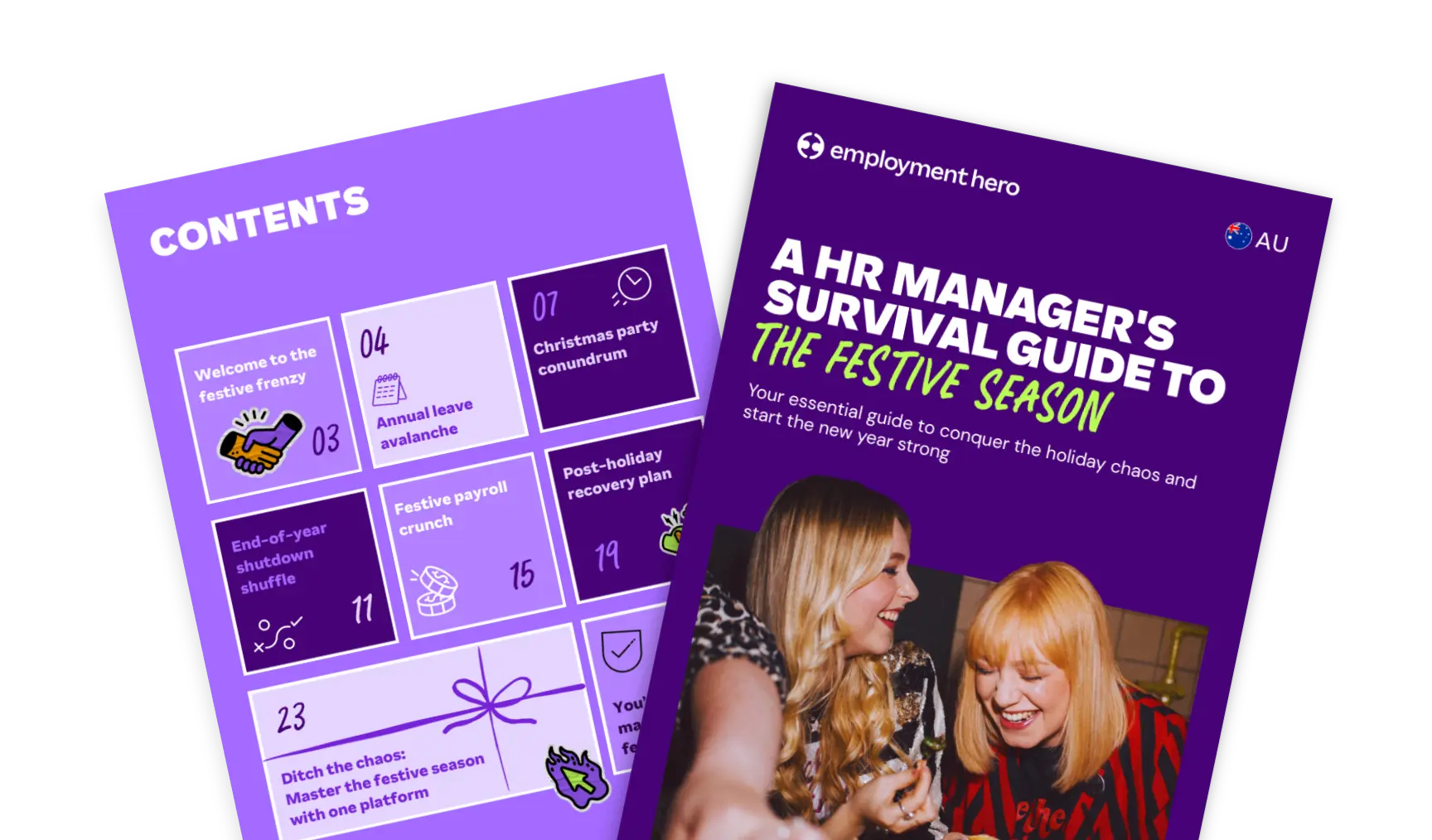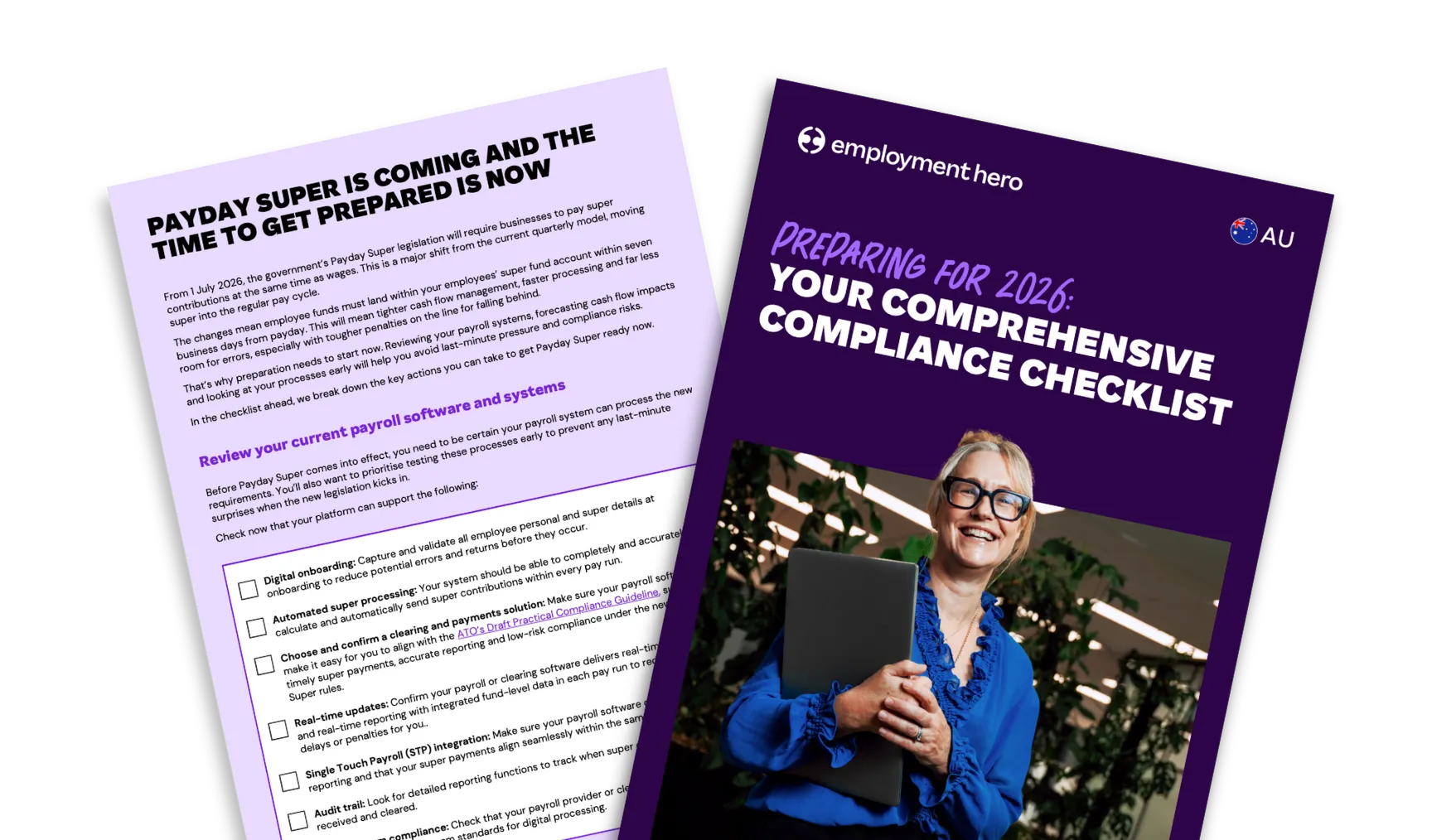How to manage toxic employees in the workplace
Published
How to manage toxic employees in the workplace
Is your team’s morale being quietly eroded from within? Are you noticing increased tension in meetings? Has collaboration dropped off among previously engaged employees? The reason could be a toxic employee whose behaviour is disrupting workplace harmony.
When negativity spreads, the effects ripple through your entire organisation. It impacts not just you and your team’s productivity, but it damages company culture and can impact client or supplier relationships.
As an employer, handling problematic behaviour presents a delicate challenge. You have to balance empathy with accountability, while prioritising your company values.
If you’ve been looking for ways to address a situation before it affects your entire business, this guide offers practical strategies for identifying, addressing, and resolving issues with difficult team members before negative attitudes spread throughout your team.
Learn how to transform challenging situations into opportunities for growth and bring your workplace back into alignment with your core values.
Which behaviours define a toxic worker?
You might have heard the saying “it only takes only one bad apple to spoil the barrel.” Toxic behaviour often emerges gradually, with subtle signs that become more apparent over time.
You might first notice changes in team dynamics or workplace atmosphere before identifying the source. What begins as occasional friction can develop into persistent patterns, ultimately disrupting your workplace culture.
Understanding these behaviours and patterns can help you intervene quickly and avoid costly mistakes before negativity becomes entrenched in your team culture. Look out for these common red flags in employees:
- Habitual negativity: Consistently responds to new ideas with pessimism, making comments like “That will never work” without offering constructive criticism.
- Gossiping and divisiveness: Regularly spreads rumours about other team members, creating unnecessary tension and forming cliques.
- Resistance to feedback: Becomes defensive or hostile when receiving constructive criticism, blaming others rather than accepting responsibility.
- Credit-stealing behaviour: Claims credit for successes while deflecting blame for failures onto colleagues.
- Passive-aggressive communication: Uses subtle hostility through sarcasm or backhanded compliments that undermine colleagues.
- Frequent complaints: Constantly voices grievances about workload or policies without offering solutions, draining team energy.
- Disregard for boundaries: Regularly disrupts other employees’ work-life balance with inappropriate after-hours demands or personal intrusions.
What can cause an employee to suddenly display toxic behaviour?
Even your most reliable team members can unexpectedly develop problematic patterns. When a previously positive employee begins displaying toxic behaviour, looking beyond symptoms can help you respond with appropriate support, rather than immediate disciplinary action.
- Personal challenges: Life events like relationship issues, family illness, or financial difficulties can drain an employee’s capacity for professional interactions.
- Workplace factors: Organisational changes, job insecurity, excessive workloads, and unresolved conflicts can trigger defensive or negative behaviours as coping mechanisms.
- Professional frustrations: Value misalignments with company decisions or feeling overlooked for advancement can build resentment that manifests as toxic workplace conduct.
Understanding these triggers is essential for maintaining a healthy company culture, but doesn’t replace the need for clear boundaries. Conducting regular pulse checks via surveys, or having weekly 1:1s to gauge how your employees are feeling can provide early indicators of brewing issues before they escalate into toxic behaviour.
How do toxic employees impact other team members?
Ever watched a single drop of ink spread through a glass of water? That’s how toxic behaviour works in your team. What begins with one difficult personality can quickly take over your entire workplace experience. But a toxic employee can dent your organisation in more ways than you can imagine.
Here’s a closer look at the true cost of allowing negative attitudes to fester in your workplace:
The impact on company culture
A toxic worker can significantly damage company culture through consistent negative attitudes and disruptive actions. Your team’s shared values and positive atmosphere can quickly erode when one person consistently undermines them.
The impact on team productivity
When someone brings toxicity to work, getting things done becomes harder for everyone. Meetings run longer, and conflicts eat up time. Projects that once moved smoothly now face constant roadblocks.
The impact of creating a toxic workplace
A poisoned atmosphere creates a painful dilemma for your team members. You’d probably witness staff turnover or witness employees adopting similar negative behaviours just to cope. Both options are terrible for your team’s well-being.
The impact on mental health
Constant exposure to negativity and tension takes a serious toll on your employees’ mental health. Stress levels rise, anxiety becomes common, and work-life balance suffers as people carry workplace problems home with them.
The impact on innovation
Creativity requires psychological safety and open communication. Toxic behaviour destroys both, leaving team members reluctant to suggest new ideas or take necessary risks. Your competitive edge gradually disappears as innovation stalls.
The financial impact
Toxic employees cost real money. Between increased turnover, higher recruitment costs, and lower productivity, the numbers add up quickly. Even a top performer who creates toxicity usually costs more than they contribute when you consider all factors.
How to address toxic employees?
Ready to deal with toxic employees? Be warned: confronting toxic behaviour in your workplace requires both courage and strategy. While it might be tempting to ignore the problem and its root cause in the hope it resolves itself, addressing the situation promptly is essential for preserving your team’s well-being and your organisation’s health.
Before diving into specific interventions, gather concrete examples and documentation that illustrate the negative impact on other team members. This evidence-based approach will help you move beyond vague impressions to specific behaviours that need addressing.
Here are practical steps to tackle toxic workplace dynamics:
#1 Document specific behaviours
Keep detailed records of problematic incidents, including dates, contexts, and outcomes. Instead of labelling someone as “negative,” note that “On Tuesday’s project meeting, Sam dismissed three colleagues’ suggestions without consideration and used sarcastic remarks that visibly discouraged further participation.“
This specificity helps the employee understand exactly what behaviours need changing and prevents them from dismissing feedback as subjective opinion.
#2 Have a direct, private conversation
Schedule a one-to-one meeting in a neutral, private space. Begin by explaining the purpose: “I’d like to discuss some workplace interactions that are causing concern.”
Present your observations without accusation: “I’ve noticed in team meetings, your responses to colleagues often include dismissive language.” Then explain the impact: “This is creating reluctance among team members to share ideas, which affects our collective creativity.”
This approach addresses the toxic behaviour without attacking the person’s character.
#3 Focus on behaviour, not personality
Frame your discussion around specific actions rather than character traits. Instead of saying “You’re too negative,” try, “When you immediately point out flaws in new ideas without acknowledging their potential, it discourages others from contributing.“
This approach makes clear that you’re not asking them to change who they are, but rather how they interact with colleagues, making the feedback more actionable and less personally threatening.
#4 Provide clear expectations and consequences
Define exactly what needs to change and by when: “I expect to see you actively listening to colleagues’ contributions and offering constructive criticism that builds on their ideas rather than simply finding fault.”
Then outline potential consequences: “If these behaviours continue, it will affect your performance evaluation and could impact your role on collaborative projects.“
This clarity eliminates ambiguity about what’s at stake.
#5 Offer support and resources
Some toxic workers may not fully recognise how their behaviour affects others or may struggle with personal challenges that spill into their work life. Ask: “What support might help you interact more positively with the team?”
Consider offering resources like communication coaching, stress management tools, or referral to an employee assistance program. This supportive approach acknowledges that changing established behaviour patterns often requires help.
#6 Follow up consistently
Schedule regular check-ins to discuss progress and provide ongoing feedback. This demonstrates that you’re committed to improvement, not just crisis management.
During these conversations, acknowledge positive changes: “I noticed how you built on Rachel’s concept in yesterday’s brainstorming session. That’s exactly the kind of collaborative approach we need.” This reinforcement helps cement new behaviours and shows you’re paying attention to their efforts.
#7 Consider team dynamics
Sometimes toxic behaviour exists within a broader context of team dysfunction. Consider whether organisational factors, such as unclear roles, unrealistic deadlines, or poor communication structures might be contributing to the problem.
Addressing these systemic issues alongside individual behaviour can create lasting improvement in your company culture and prevent future toxicity from taking root.
In the end, when handled skillfully, these interventions can transform a challenging situation into an opportunity for growth; not just for the toxic employee, but for your entire leadership approach.
And if you are looking to transform your company culture from the ground up, use our comprehensive culture bundle to build resilient teams that naturally resist toxic influences and thrive under pressure.
Fostering a healthier workplace
Toxic behaviour rarely exists in isolation. Approaching these challenging situations with reason and compassion is consistently more effective than immediate disciplinary action alone. However, sometimes, you need additional support to navigate complex personnel issues.
If you require an extra helping hand, our HR advisory, as part of our Employment Operating System, can help you manage tricky situations like these. To find out more about our powerful software and workplace advice tailored to your specific circumstances, book a demo with our team today.
Download the guide
Related Resources
-
 Read more: HR Managers: Don’t just survive the festive season, master it
Read more: HR Managers: Don’t just survive the festive season, master itHR Managers: Don’t just survive the festive season, master it
Make year-end easier: manage leave, payroll, parties and shutdowns with confidence. Get practical tips for Australian SMEs. Download the free…
-
 Read more: Preparing for 2026: Your Compliance Checklist
Read more: Preparing for 2026: Your Compliance ChecklistPreparing for 2026: Your Compliance Checklist
Get your business ready for the 1 July 2026 changes. See practical steps for Payday Super, cash flow planning and…
-
 Read more: Monthly business budget template for employers
Read more: Monthly business budget template for employersMonthly business budget template for employers
Plan your monthly income and expenses with our free monthly business budget template. Download today to track cash flow and…























